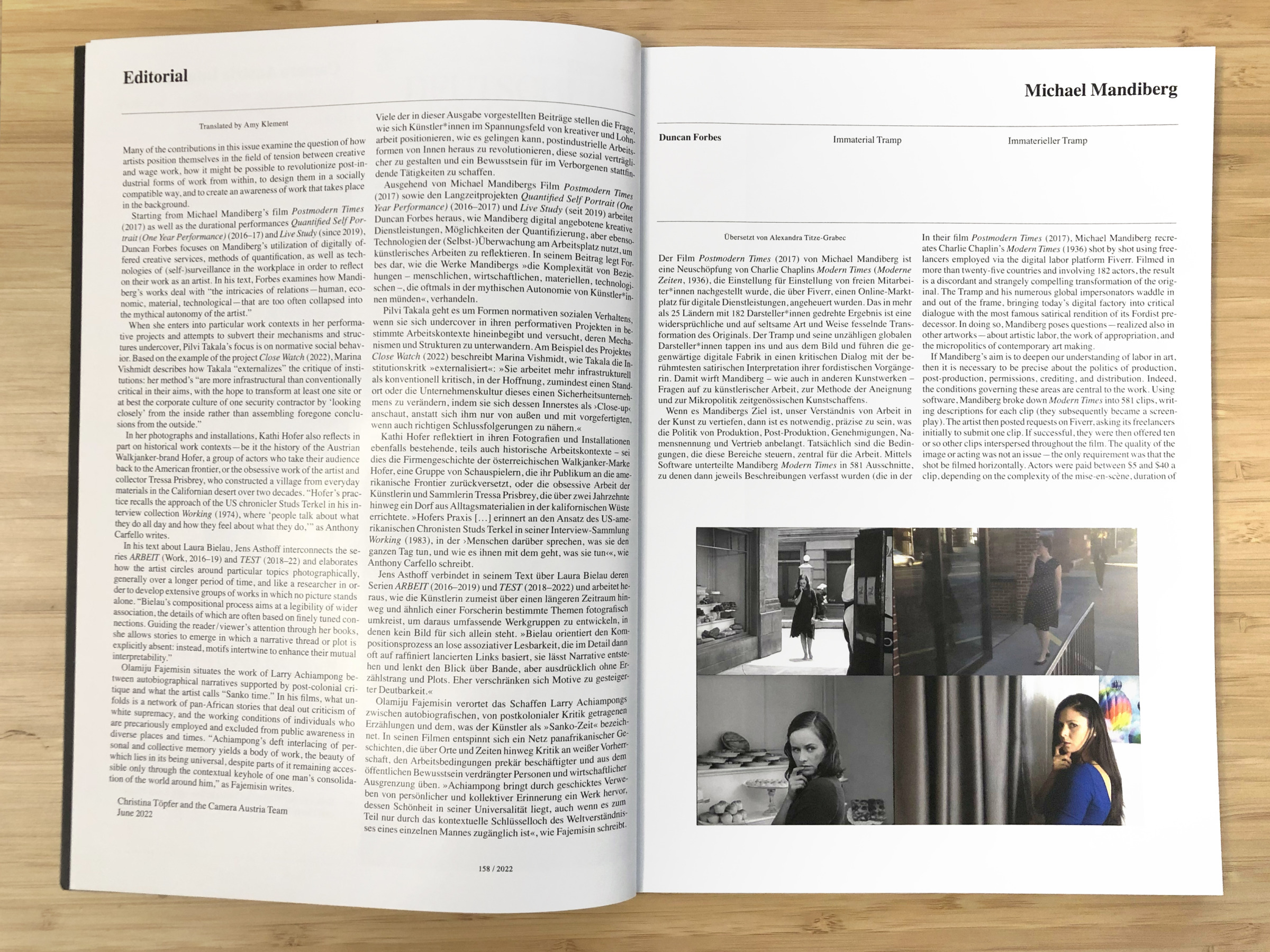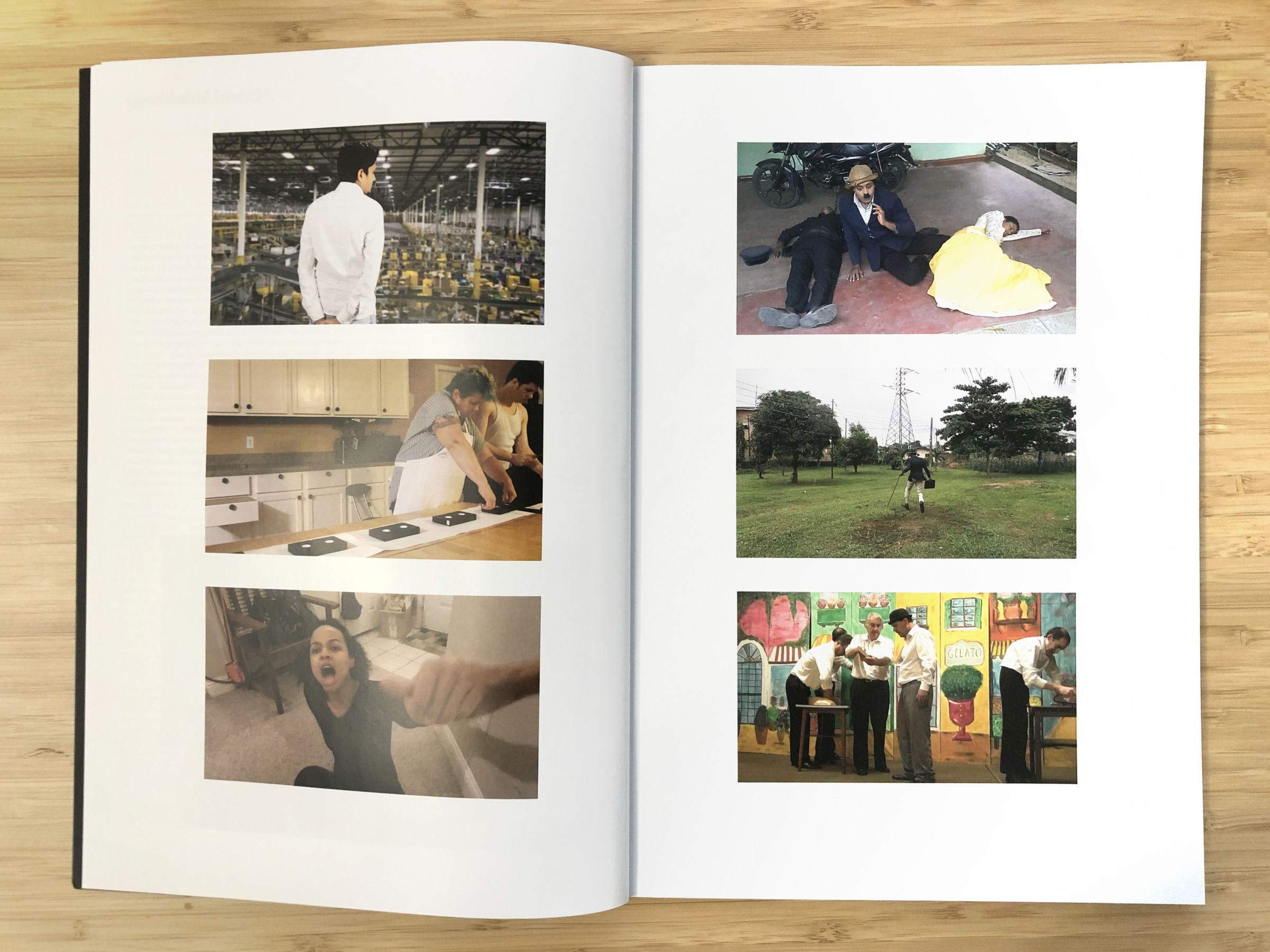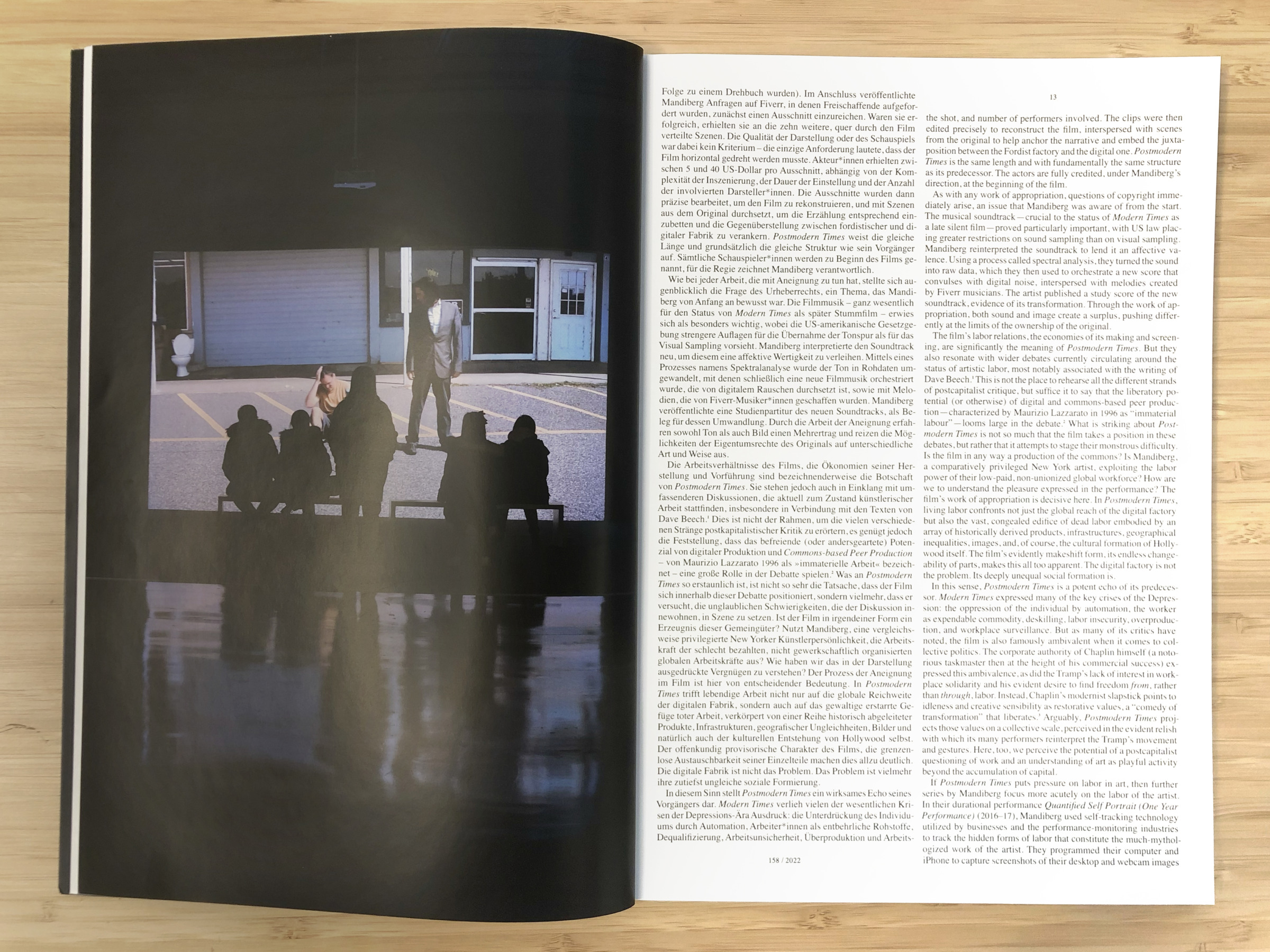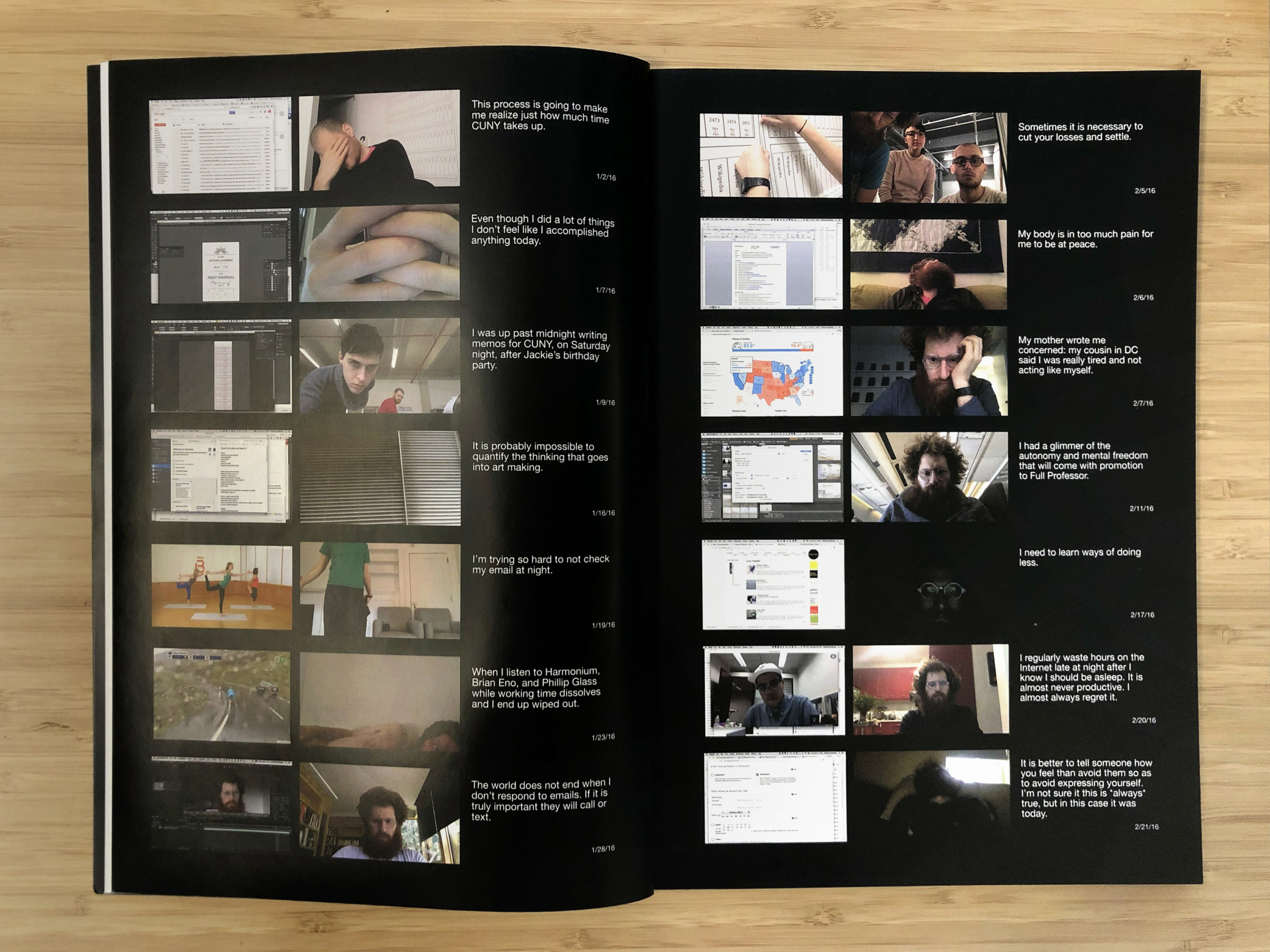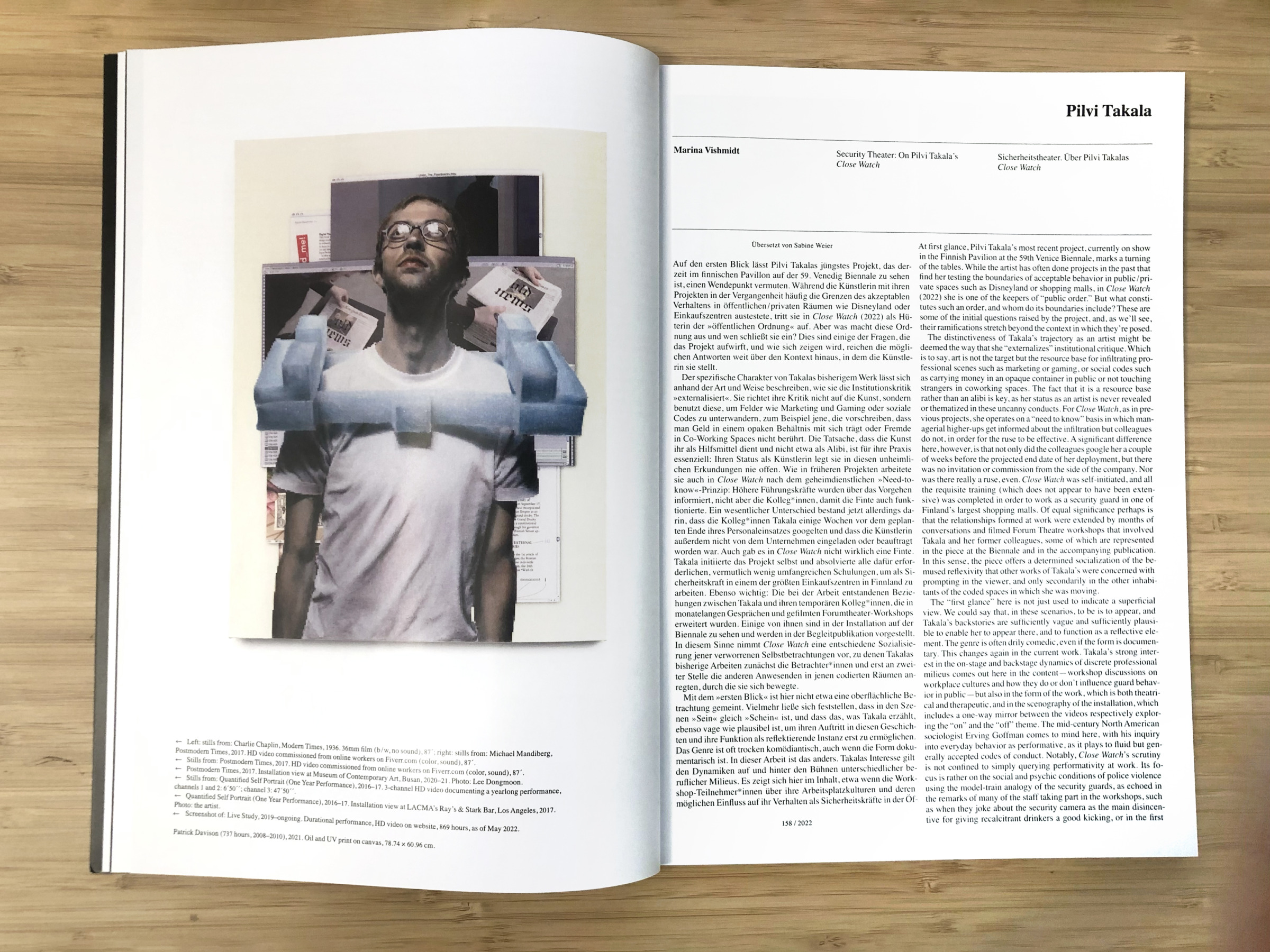By Duncan Forbes
Purchase the Magazine Online.
In their film Postmodern Times (2017), Michael Mandiberg recre-ates Charlie Chaplin’s Modern Times (1936) shot by shot using free-lancers employed via the digital labor platform Fiverr. Filmed in more than twenty-five countries and involving 182 actors, the result is a discordant and strangely compelling transformation of the orig-inal. The Tramp and his numerous global impersonators waddle in and out of the frame, bringing today’s digital factory into critical dialogue with the most famous satirical rendition of its Fordist pre-decessor. In doing so, Mandiberg poses questions—realized also in other artworks—about artistic labor, the work of appropriation, and the micropolitics of contemporary art making.
If Mandiberg’s aim is to deepen our understanding of labor in art, then it is necessary to be precise about the politics of production, post-production, permissions, crediting, and distribution. Indeed, the conditions governing these areas are central to the work. Using software, Mandiberg broke down Modern Times into 581 clips, writ-ing descriptions for each clip (they subsequently became a screen-play). The artist then posted requests on Fiverr, asking its freelancers initially to submit one clip. If successful, they were then offered ten or so other clips interspersed throughout the film. The quality of the image or acting was not an issue—the only requirement was that the shot be filmed horizontally. Actors were paid between $5 and $40 a clip, depending on the complexity of the mise-en-scène, duration of the shot, and number of performers involved. The clips were then edited precisely to reconstruct the film, interspersed with scenes from the original to help anchor the narrative and embed the juxta-position between the Fordist factory and the digital one. Postmodern Times is the same length and with fundamentally the same structure as its predecessor. The actors are fully credited, under Mandiberg’s direction, at the beginning of the film.

